
This article was updated on September 1st, 2023

Waking up or coming home to a vomiting dog can be an upsetting experience, and if the resulting vomit contains blood, you may be scared for your dog’s health. Blood in a dog’s vomit may signal something serious is wrong with them, but there are several explanations. In this article, we will review several pictures of situations with blood in a dog’s vomit and discuss the most likely causes.

In all cases, it is essential to take your dog to see your veterinarian as soon as possible. It will be helpful to the veterinarian if you also take a picture of the vomit or be able to accurately describe it. Below are some picture examples of dog vomit with blood in it that may be helpful.
Picture 1: Your dog’s vomit contains small amounts of frank (red blood) mixed with phlegm
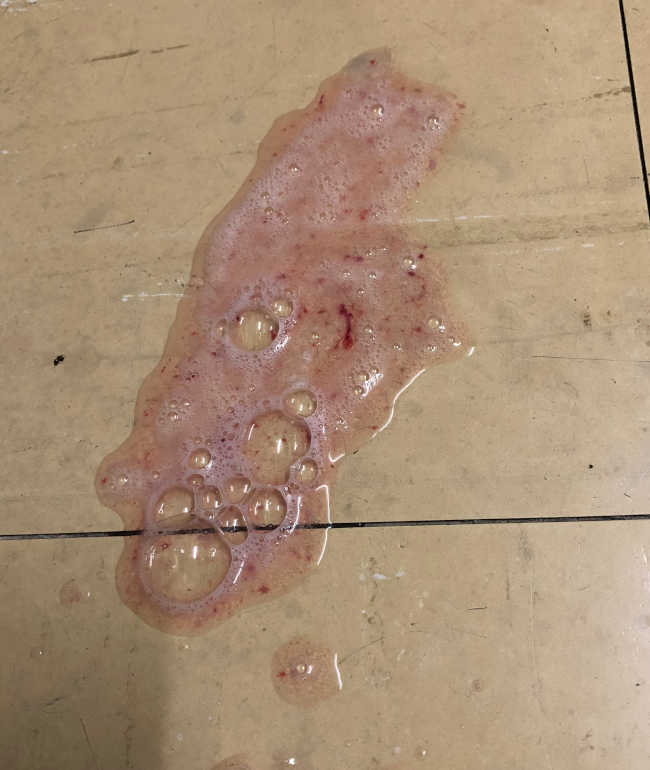
Small amounts of red blood in a dog’s vomit could be due to several issues or medical conditions. The most likely causes include the following:
- irritated esophagus or pharynx
- ruptured capillaries in the esophagus
- bleeding from nose
- infected/broken tooth
- trauma in mouth
- clotting disorder
- cancer
- parasites
- rodenticide toxicity
Vomit with specks of blood or a small quantity of blood or can be mild and temporary, or it can be severe and life-threatening. Even a small amount of blood in the vomit may be an early indication of a more serious issue that could lead to massive bleeding later on. If you notice any blood in your dog’s vomit, it is crucial to seek prompt veterinary care.
Picture 2: Your dog’s vomit contains a moderate amount of blood mixed in liquid
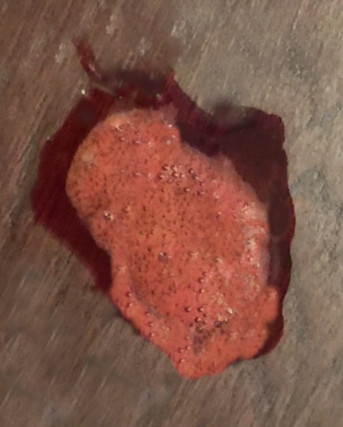
In this situation, the amount of blood in your dog’s vomit appears to be higher. The most likely causes include the following:
- gastrointestinal foreign body or obstruction
- clotting disorder
- cancer
- internal bleeding
- rodenticide toxicity
- severe oral trauma
- nosebleed
A moderate amount of blood can be caused by a relatively minor cause such as a virus, eating something foreign or a broken blood vessel in the esophagus. However, it can also be the first sign of a serious illness. It is imperative to consult your veterinarian to determine the cause of the vomiting in your dog and its severity. Only a professional can diagnose and provide the correct treatment.
Picture 3: Your dog’s vomit contains coagulated blood (black or coffee ground appearance)
Example picture 1/3:
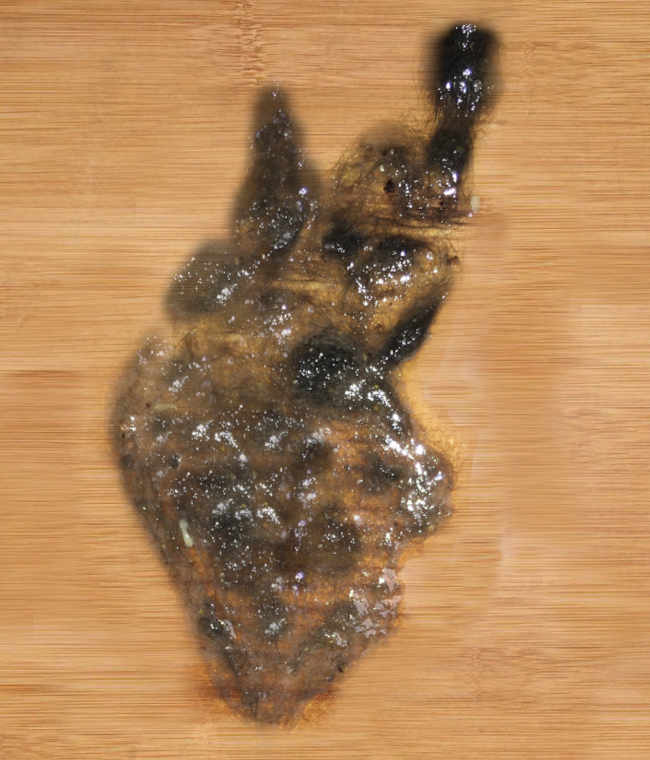
Example picture 2/3:
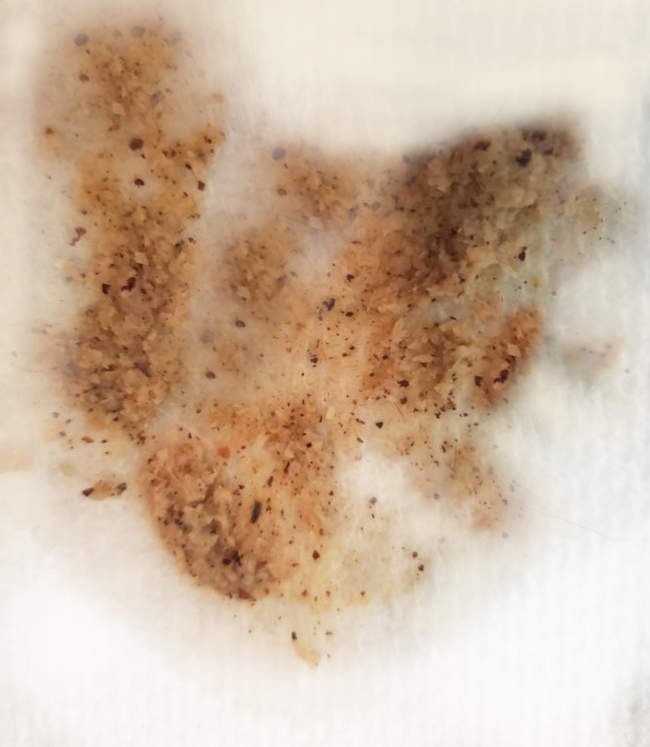
Example picture 3/3:
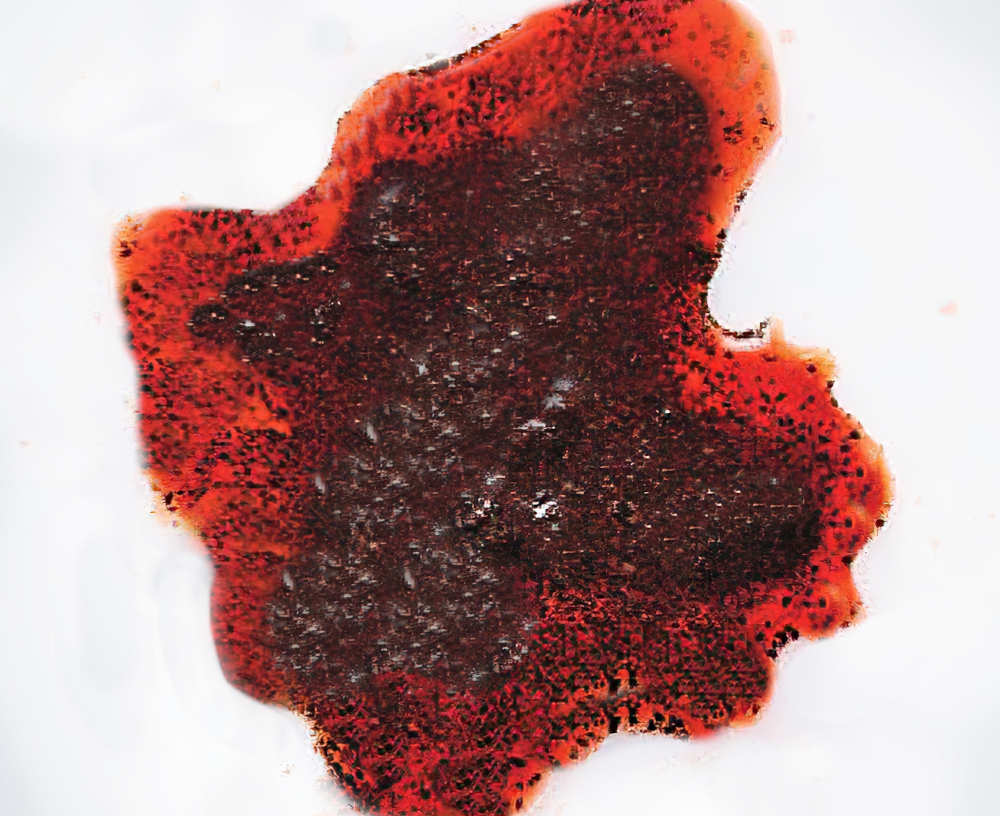
If your dog’s vomit appears to contain blood that looks almost black or has the appearance of coffee grounds, the following causes are more likely:
- bleeding in the gastrointestinal tract
- clotting disorder
- gastrointestinal foreign body or obstruction
- cancer
- parasites
Veterinarian tip: Remember that you can not draw a definite conclusion based on a picture alone. It’s important to meet with your veterinarian to do a full physical exam to understand the true cause of your dog’s ailments.
Picture 4: Your dog’s vomit shows a moderate amount of blood mixed in food.
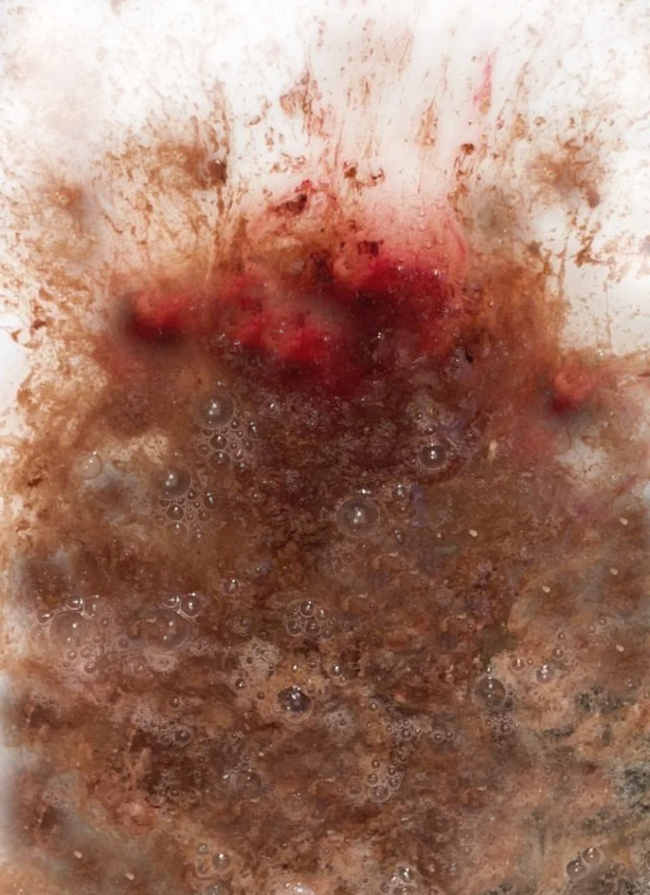
The most likely medical conditions causing dog vomiting with a moderate amount of blood mixed in food include:
- gastrointestinal foreign body or obstruction
- cancer
- internal bleeding
- clotting disorder
- parasites
- rodenticide toxicity
- nose bleed
Picture 5: Your dog’s vomit contains a large amount of frank red blood (hemorrhage)

If your dog is vomiting large amounts of blood, it is an emergency, and they must be taken to a veterinarian immediately. Causes could include:
- severe internal hemorrhage
- rodenticide toxicity
- severe clotting disorder
- trauma
- cancer
Diagnosis at the vet
Your veterinarian will start by taking a thorough medical history and checking your dog over carefully. They will then determine which diagnostic tests they need to run to find out why your dog is vomiting blood. These diagnostic tests may include:
- Blood tests including blood clotting (coagulation) tests
- Testing for infectious diseases such as canine parvovirus (CPV)
- Urine or fecal tests
- X-rays (radiographs)
- Abdominal ultrasound
What other signs are typically seen
A dog that vomits with blood will often show one of the following signs:
- Retching
- Hacking
- Vomiting food or liquid
- Blood around mouth/nose
- Red tinge, streaking, blood clots, or frank blood in vomit
Steps you can take at home to help
If your dog is vomiting large amounts of blood, it is an emergency, and you should take them to the nearest veterinarian immediately. If the amount of blood seen in the vomit is small, stay calm and keep your dog calm as well. You should take away any food or chew toys they have and try to determine where the blood is coming from.
Veterinarian’s Tip: If there is a large amount of blood and the dog is vomiting or distressed, find the nearest veterinary emergency hospital and rush your dog in for care.
Small irritations or cuts in the mouth may not need veterinary intervention. However, if the source of the blood is not easily identified, or it is coming from the nose or internally, the dog should see their veterinarian as soon as possible.
When to call your veterinarian
If the amount of blood is large, for example, it appears the dog is vomiting just blood, they must be taken to the nearest veterinarian immediately. This type of hemorrhage is an emergency.
Smaller amounts of blood may not be as urgent but should almost always be examined by a veterinarian to determine the cause. Rodenticide toxicity, clotting disorders, gastrointestinal obstructions, cancer, and parasites can all be fatal if left untreated. A pet has the best chance of recovery if diagnosed and treated early.
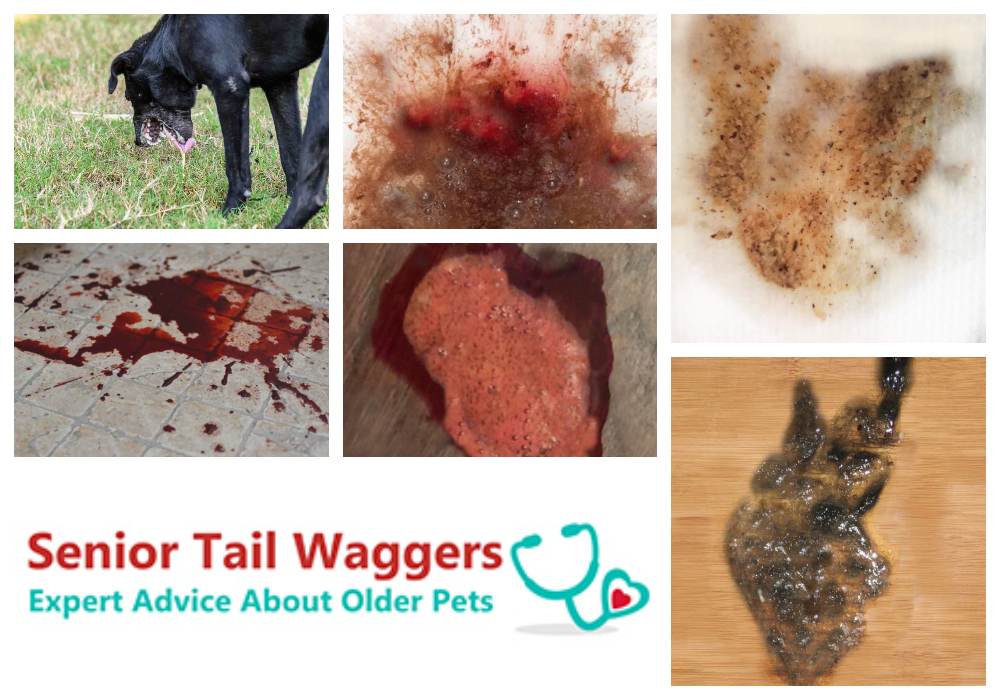
Disclaimer: This website's content is not a substitute for veterinary care. Always consult with your veterinarian for healthcare decisions. Read More.


Be the first to comment